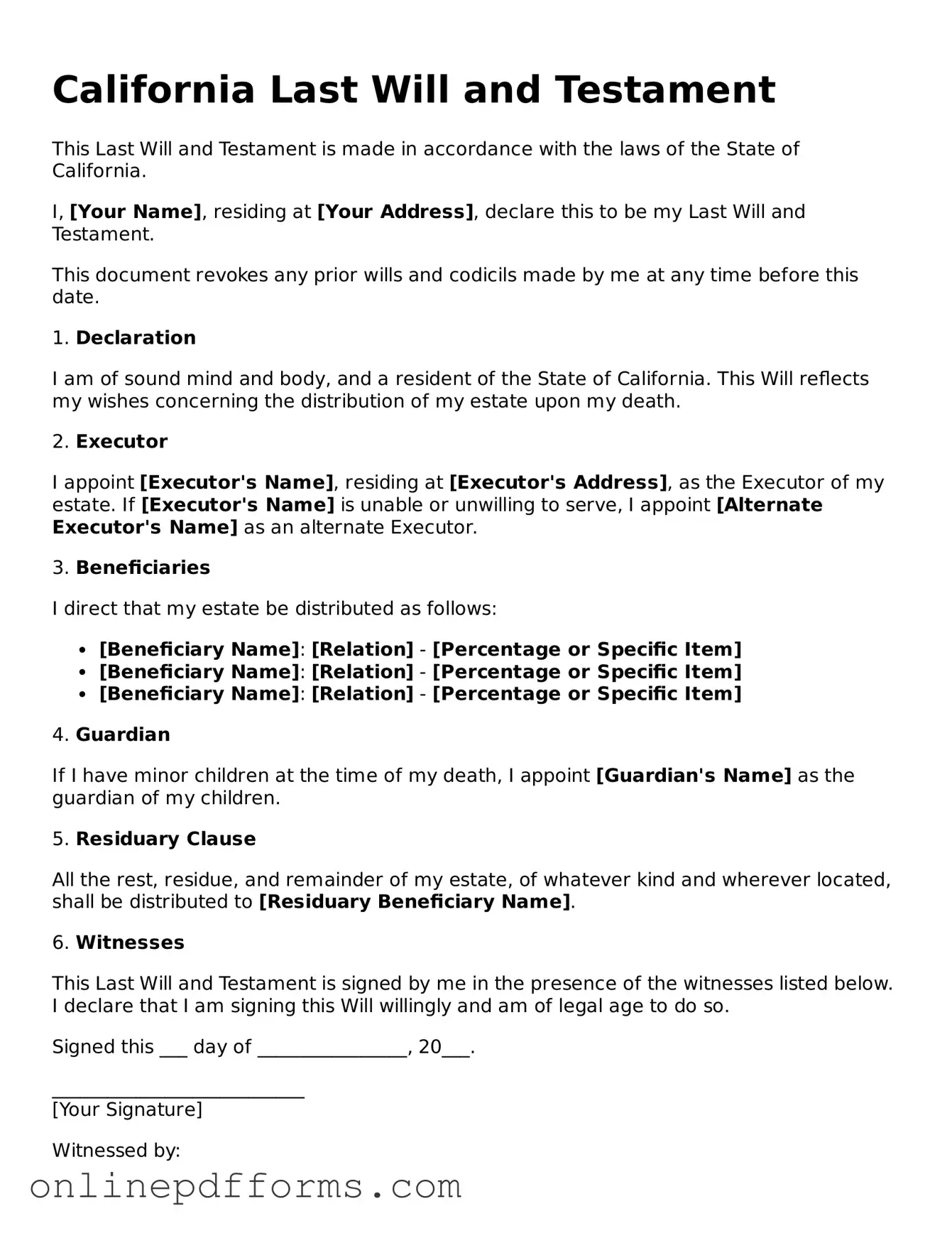The California Last Will and Testament form shares similarities with a Living Will. While a Last Will and Testament outlines how a person wishes their assets to be distributed after death, a Living Will focuses on medical decisions. In both documents, individuals express their preferences regarding significant life choices. The Living Will specifically addresses healthcare preferences, ensuring that one’s wishes regarding medical treatment are honored in situations where they cannot communicate those decisions themselves.
An Advance Healthcare Directive is another document akin to a Last Will and Testament. This directive combines elements of a Living Will and a Power of Attorney for healthcare. It allows individuals to outline their medical treatment preferences and appoint someone to make healthcare decisions on their behalf if they become incapacitated. Like a Last Will, it ensures that a person's wishes are respected, but it specifically pertains to health-related matters rather than asset distribution.
The Durable Power of Attorney is also comparable to the Last Will and Testament in that it allows individuals to designate someone to make decisions on their behalf. While a Last Will comes into effect after death, a Durable Power of Attorney is effective during a person’s lifetime, particularly when they are unable to make decisions due to illness or incapacity. This document ensures that an appointed individual can manage financial and legal matters, reflecting the individual's wishes while they are still alive.
The Washington Bill of Sale form serves as a vital legal document for individuals engaging in the sale or transfer of personal property, ensuring clarity and legal backing for the transaction. Understanding its importance for providing proof of purchase, detailing the buyer and seller, item description, and sale price is essential for both parties. For further details, you can visit https://pdftemplates.info/washington-bill-of-sale-form/.
A Trust, particularly a Revocable Living Trust, shares key features with a Last Will and Testament. Both documents are used to manage the distribution of assets. However, a Trust can take effect during a person’s lifetime, allowing for the management of assets before death. This can help avoid probate, a legal process that can be lengthy and costly. In contrast, a Last Will only takes effect after death, making it a less flexible option for asset management during one’s lifetime.
Lastly, a Memorandum of Personal Property can be seen as similar to a Last Will and Testament in its intent to clarify the distribution of personal belongings. While a Last Will typically addresses significant assets, a Memorandum allows individuals to specify how they wish to distribute personal items, such as family heirlooms or sentimental possessions. This document can be referenced in a Last Will, providing additional clarity and ensuring that personal items are distributed according to the individual's wishes.
